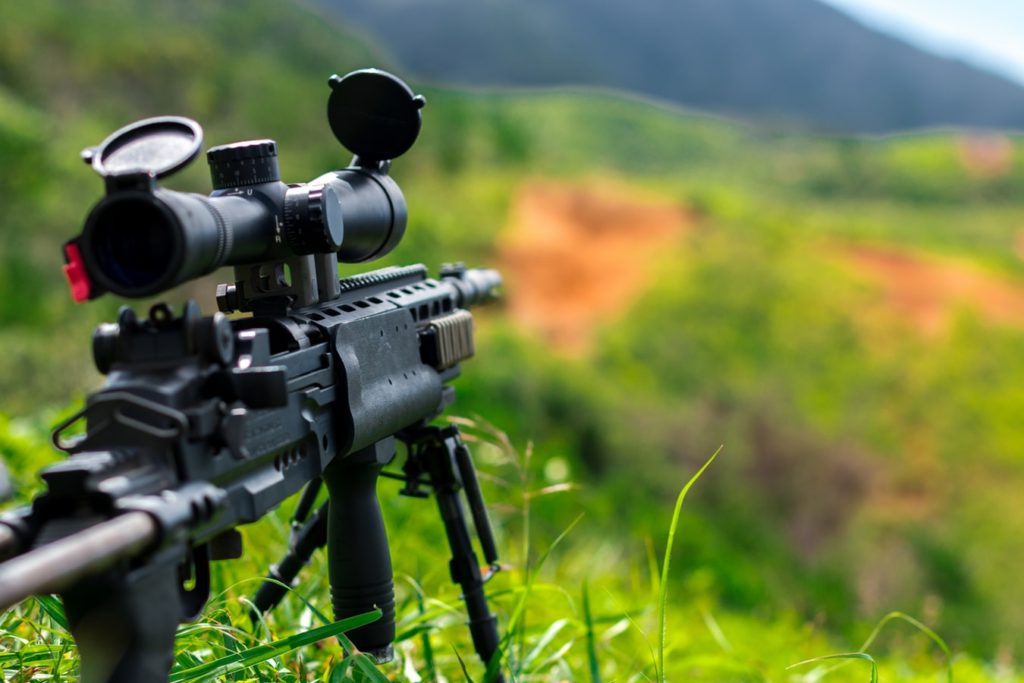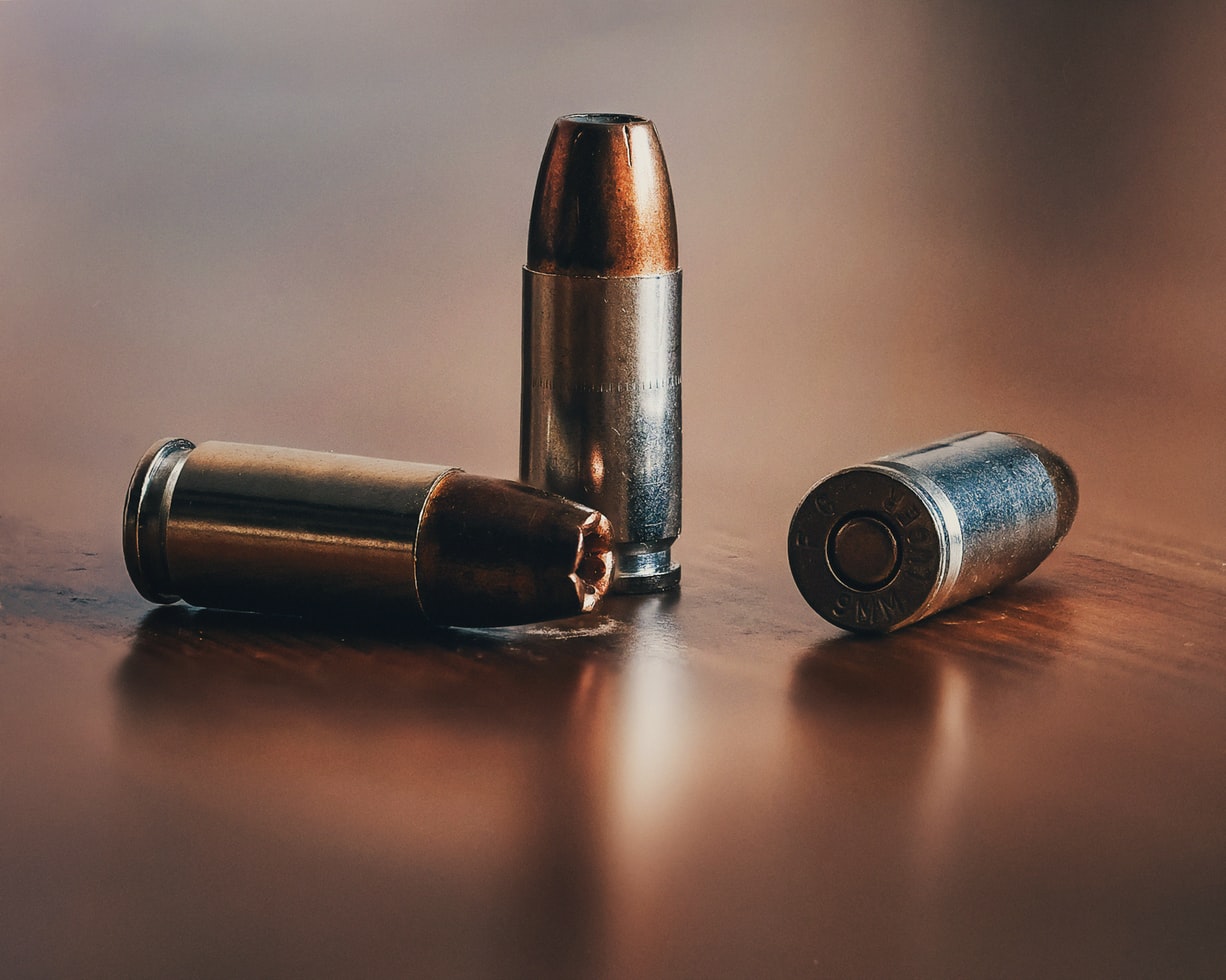Editor’s Note: This article by Matthew Cox originally appeared on Military.com, a leading source of news for the military and veteran community.
As Army weapons officials near the end of a bold effort to arm close-combat units with Next Generation Squad Weapons, new details have emerged about the program’s elusive 6.8mm ammo, designed to pierce enemy body armor.
The Army’s long-standing effort to develop this revolutionary round, capable of taking on a sophisticated peer enemy on the battlefield, has required gun makers to challenge design assumptions and innovate.
Now that plans to develop and field the bullet are taking shape, it remains to be seen whether it will live up to its promise to transform the fight for infantrymen.
Just recently, the three gunmakers selected for the final phase of the effort have presented a much clearer picture of the three distinctly different cartridge designs. Both Army and industry officials have disclosed concrete information on the composition of the 6.8mm projectile and how gunmakers have designed their NGSW auto rifle and rifle candidates to cope with potential problems created by the new high-velocity ammunition.
The New General-Purpose Projectile
Since the program took off two years ago, Army officials have refused to discuss specific details about the new 6.8mm bullet and the performance it’s capable of producing.
“We want to make sure we are not divulging things at some point that would give our adversaries some ideas of the things that we are trying to do,” Brig. Gen. Anthony Potts, the commander of Program Executive Office Soldier, said recently.
The stance is quite different from the openness the Army showed when it unveiled its M855A1 5.56mm Enhanced Performance Round in 2011 and, later, the M80A1 7.62mm EPR.
Two Army officials with knowledge of the new 6.8mm General Purpose Projectile confirms to Military.com that it is very similar to the composition of the M855A1 and M80A1, consisting of an exposed steel penetrator that sits on top of a copper slug and is partially encased in a copper jacket.
But so far, neither Army officials or the gun makers involved in the effort will talk about the muzzle velocity of the 6.8mm round, or the extended range it’s designed to achieve to be lethal against a modern, peer adversary.

The choice for 6.8mm emerged out of a 2017 research initiative: the Small Arms Ammunition Configuration Study. That report convinced Army leaders that infantrymen need a round that would penetrate enemy body armor much more effectively than the current M855A1 EPR round.
“It was the precursor of the Next Generation Squad Weapon program,” said Brig. Gen. David Hodne, director of the Soldier Lethality Cross Functional Team and chief of infantry at the Army’s Maneuver Center of Excellence at Fort Benning, Georgia. To date, the unclassified version of the study has not been released to the public.
Program officials have said that the NGSW effort is different from past Army small arms programs because it began with the ammunition, and not the design of the weapons.
“If you want to build a new innovative weapon, you start with the ammunition; you don’t start with the weapon and try to back into the ammunition — that is not the most effective means to do it,” Potts said. “In the end … there is no secret, it’s all about energy on target. So, we have to understand the targets that we are going after, we have to understand how much energy it takes to defeat that target at that distance, and we have to build a system that delivers that.”
From the start, this ambitious performance goal created concerns in the firearms community — particularly penetrating body armor would require much higher velocities than the M855A1 EPR’s 2,970 feet per second. Higher velocities often come with higher chamber pressures, which can cause premature parts wear and reliability problems over time.
“If you have a terminal performance objective that includes body armor, there is no doubt you are going to have to raise the pressure to increase velocity because that is a key factor … in overcoming the body armor,” said Trevor Shaw, a retired Army lieutenant colonel who has worked in the firearms industry for more than 15 years. “The more velocity you’ve got, the better armor penetration you are going to have.”
Design Challenges
The three gunmakers selected by the Army for the final phase of the NGSW effort are approaching the problem in different ways.
General Dynamics Ordnance and Tactical Systems Inc. teamed up with True Velocity to produce a composite-cased 6.8mm cartridge. For gun-making expertise, GD joined with Beretta USA, which made the U.S. Army’s M9 pistol for decades before the Sig Sauer Modular Handgun System was chosen in 2017 to replace it.
The team was fully aware of the dangers of higher pressures when it designed its automatic rifle and rifle prototypes, said Dave Stouffer, director of business development for the GD-OTS team.
“Higher pressures in the weapon drive all sorts of unsavory things — barrel wear … the stresses that go back on the bolt face, extraction [problems], premature part wear — there’s all sorts of unfavorable things higher pressure drives,” he said.
The GD team chose a bullpup design — which puts the magazine and bolt-carrier group behind the pistol grip and trigger group — to avoid the problem and still meet the Army’s requirements, Stouffer said.
“One of the benefits of a bull pup-style weapon is that you can run much lower pressures and still achieve the desired velocities because you have a longer barrel,” Stouffer said.
Finish Reading the Article Here
Latest Posts
- Mental Health in the Workplace: Fostering a Supportive and Productive Environment
- Understanding the factors that influence engagement
- Maximize Your Online Earning Potential with Remixable: The Ultimate Platform for Content Creation and Affiliate Marketing
- From Battlefields to Boardrooms: Navigating the Civilian Workforce for Military Veterans
- Why Veterans Make Exceptional Entrepreneurs





